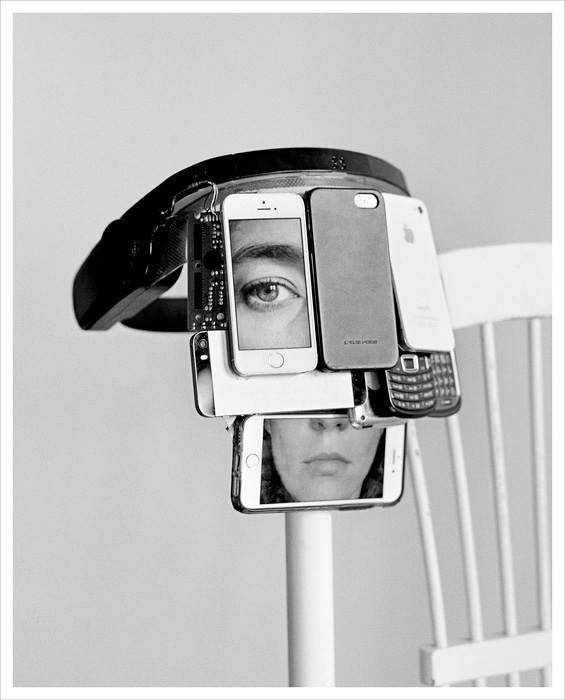[Fall 2021]
By Edward Pérez-González
[Excerpt]
The reflections on screens and on relations between image and reality offered by the philosopher Jean Baudrillard (1929– 2007) in his essay Écran total served as a framework for the staging of the exhibition of the same name, presented by the Centre de design at UQAM1 and organized by a curatorial collective. Projected on the walls, Baudrillard’s photographs physically and conceptually enwrapped the works by the guest artists – Adam Basanta, Penelope Umbrico, Mishka Henner, and Vaseem Bhatti – and by the artists selected through a competition – Charlie Doyon, Clint Enns, and Xuan Ye. These works were intended to challenge the implications for contemporary life of the omnipresence of screens: “No more separation, no more emptiness, no more absence: we enter the screen, the barrier-free virtual image. We enter our life as if entering a screen. We scroll through our own life as a digital stratagem.”2
In our constant desire to invent a stimulating life for ourselves, a life that is conditioned and valorized by the gaze of the other, we unreservedly abandon ourselves to the world of screens. As contemporary people, we can exist only through them, and we pay no mind to what is left out in this process of dehumanization: smell, taste, texture, weight, density, time. Hypnotized, we enter the screen, participating in and subjecting ourselves to the frenetic bombardment of images, including those that we should naturally find shocking: natural catastrophes, scenes of violence, injustice, racism, homophobia, genocide, and so on. We apprehend them as if they were images from feature films, or narrative constructions, or even the remains of a bygone imaginary. By separating us from the real, the screen seems to protect us, shelter us, remove us from the human condition, from what could make us suffer. And so, we live in the time of “de-” – not in the sense of negation or reversal of meaning, nor in the sense of excess, but in the sense of being “outside of.” Desensitization, dehumanization – the search for an out-of-human existence.
The staging of the exhibition is based on the idea of central core and enwrapping. The wrapping is composed of several video projections presenting short sequences in which photographs taken by Baudrillard alternate with excerpts of his writings. One might say that Baudrillard resists the erasure of the subject and the dissolution of singularities by trying, through his photographs, to capture the value of experience, of real life, as an intense event – the value of the “I” that I am – physical body, sensations, and perceptions. His gaze testifies to his sensitivity to the texture of the world as rendered through the photographic image…
See the magazine for the complete article and more images: Ciel variable 118 – EXHIBITING PHOTOGRAPHY

